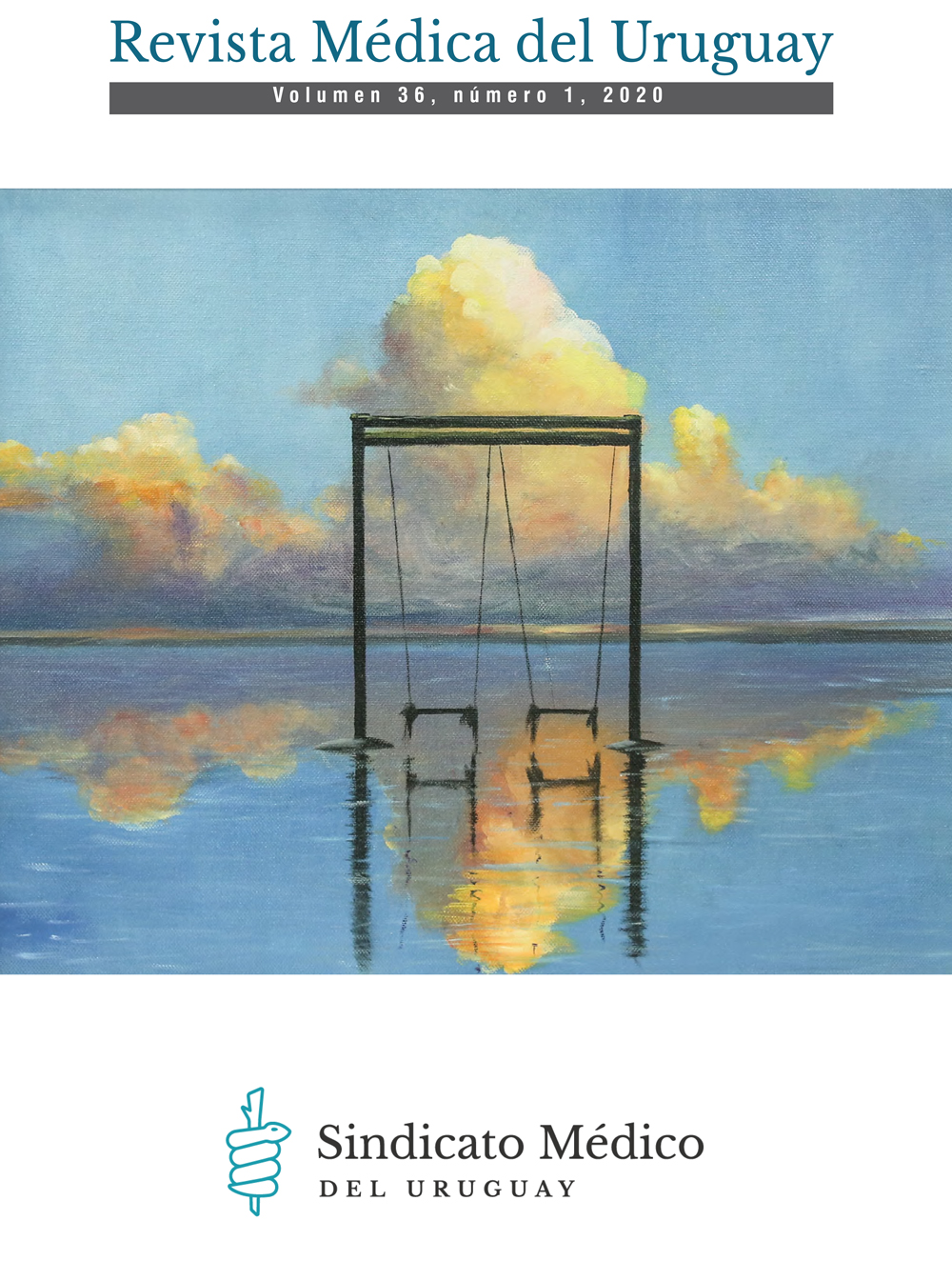Estudio de incidencia de riesgos y eventos vinculados a la seguridad en una unidad de cuidados intensivos
Resumen
Introducción: los pacientes críticos son muy vulnerables a la iatrogenia. Los eventos vinculados a la seguridad (EVS) contribuyen en la morbilidad y mortalidad de los pacientes ingresados. Por esto, su detección y prevención son importantes.
Objetivos: estudiar la incidencia de EVS seleccionados en una unidad de cuidados intensivos (UCI) y el daño que generan. Sentar las bases para un sistema de notificación de EVS.
Metodología: estudio prospectivo de incidencia mediante dos metodologías: reporte voluntario y auditoría de historias clínicas.
Resultados: incluyó 174 pacientes. Se detectaron 107 EVS en el 35% de los pacientes. Los más prevalentes fueron la salida de sondas y catéteres (42%) y los relacionados a medicación de alto riesgo (12,8%). La edad (p=0,046), tiempo de estancia en UCI (p=0,001) y requerimiento de sedoanalgesia (p=0,039) se asociaron en forma independiente a la presencia de EVS. El 76,6% de los eventos generó daño, pero no se asoció a mayor mortalidad (p=0,96).
Conclusiones: los EVS son altamente frecuentes en UCI. La salida de sondas y catéteres son los más prevalentes. Se asocia con el requerimiento de asistencia ventilatoria, la sedoanalgesia y la estancia en UCI. El reporte voluntario es una herramienta útil para su detección.
Citas
(2) Steel K, Gertman PM, Crescenzi C, Anderson J. Iatrogenic illness on a general medical service at a university hospital. N Engl J Med 1981; 304(11):638-42.
(3) Leape LL, Brennan TA, Laird N, Lawthers AG, Localio AR, Barnes BA, at al. The nature of adverse events in hospitalized patients. Results of the Harvard Medical Practice Study II. N Engl J Med 1991; 324(6):377-84.
(4) Chantler C. The role and education of doctors in the delivery of health care. Lancet 1999; 353(9159):1178-81.
(5) Cooper JB, Newbower RS, Long C, McPeek B. Preventable anesthesia mishaps: a study of human factors. Anesthesiology 1978; 49(6):399-406.
(6) Hartwig SC, Denger SD, Schneider PJ. Severity-indexed, incident report-based medication error-reporting program. Am J Hosp Pharm 1991; 48(12):2611-6.
(7) Donchin Y, Gopher D, Olin M, Badihi Y, Biesky M, Sprung CL, et al. A look into the nature and causes of human errors in the intensive care unit. Crit Care Med 1995; 23(2):294-300.
(8) Thomas EJ, Studdert DM, Burstin HR, Orav EJ, Zeena T, Williams EJ, et al. Incidence and types of adverse events and negligent care in Utah and Colorado. Med Care 2000; 38:261-71.
(9) Aranaz-Andrés JM, Aibar-Remón C, Vitaller-Murillo J, Ruiz-López P, Limón-Ramírez R, Terol-García E, et al. Incidence of adverse events related to health care in Spain: re sults of the Spanish National Study of Adverse Events. J Epidemiol Community Health 2008; 62:1022-9.
(10) Merino P, Álvarez J, Cruz Martín M, Álonso A, Gutiérrez I; SYREC Study Investigators. Adverse events in Spanish intensive care units: the SYREC study. Int J Qual Health Care 2012; 24(2):105-13.
(11) Giraud T, Dhainaut J, Vaxelaire J, Joseph T, Journois D, Bleichner G, et al. Iatrogenic complications in adult intensive care units: a prospective two-center study. Crit Care Med 1993; 21(1):40-51.
(12) Bellomo R, Goldsmith D, Russell S, Uchino S. Postoperative serious adverse events in a teaching hospital: a prospective study. Med J Aust 2002; 176(5):216-8.
(13) Capuzzo M, Nawfal I, Campi M, Valpondi V, Verri M, Alvisi R. Reporting of unintended events in an intensive care unit: comparison between staff and observer. BMC Emerg Med 2005; 5(1):3.
(14) Beckmann U, Bohringer C, Carless R, Gillies D, Runciman W, Wu A, et al. Evaluation of two methods for quality improvement in intensive care: facilitated incident monitoring and retrospective medical chart review. Crit Care Med 2003; 31(4):1006-11.
(15) Beckmann U, Baldwin I, Hart G, Runciman W. The Australian Incident Monitoring Study in Intensive Care: AIMS-ICU. An analysis of the first year of reporting. Anaesth Intensive Care 1996; 24(3):320-9.
(16) Holzmueller CG, Pronovost PJ, Dickman F, Thompson DA, Wu AW, Lubomski LH, et al. Creating the web-based intensive care unit safety reporting system. J Am Med Inform Assoc 2005; 12(2):130-9.
(17) Thomas EJ, Petersen LA. Measuring errors and adverse events in health care. J Gen Intern Med 2003; 18(1):61-7.
(18) Graf J, von den Driesch A, Koch KC, Janssens U. Identification and characterization of errors and incidents in a medical intensive care unit. Acta Anaesthesiol Scand 2005; 49(7):930-9.
(19) Tissot E, Cornette C, Demoly P, Jacquet M, Barale F, Capellier G. Medication errors at the administration stage in an intensive care unit. Intensive Care Med 1999; 25(4):353-9.
(20) Ridley SA, Booth SA, Thompson CM; Intensive Care Society’s Working Group on Adverse Incidents. Prescription errors in UK critical care units. Anaesthesia 2004; 59(12):1193-200.
(21) Bracco D, Favre JB, Bissonnette B, Wasserfallen JB, Revelly JP, Ravussin P, et al. Human errors in a multidisciplinary intensive care unit: a 1-year prospective study. Intensive Care Med 2001; 27(1):137-45.
(22) Flynn EA, Barker KN, Pepper GA, Bates DW, Mikeal RL. Comparison of methods for detecting medication errors in 36 hospitals and skilled-nursing facilities. Am J Health Syst Pharm 2002; 59(5):436-46.
(23) Dean B, Barber N. Validity and reliability of observational methods for studying medication administration errors. Am J Health Syst Pharm 2001; 58(1):54-9.














